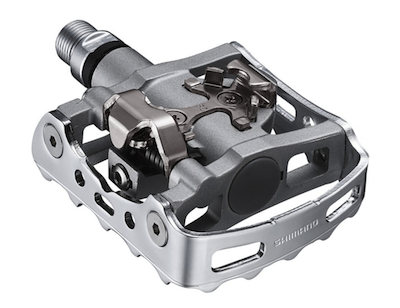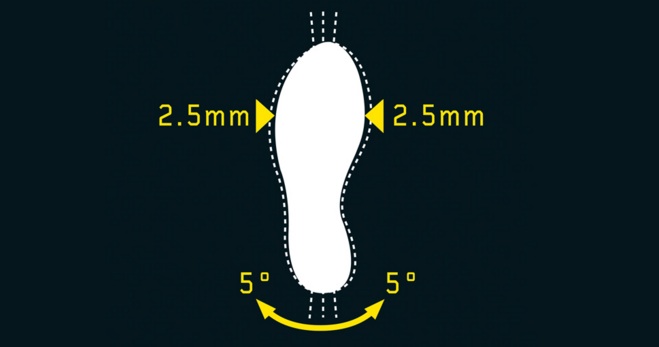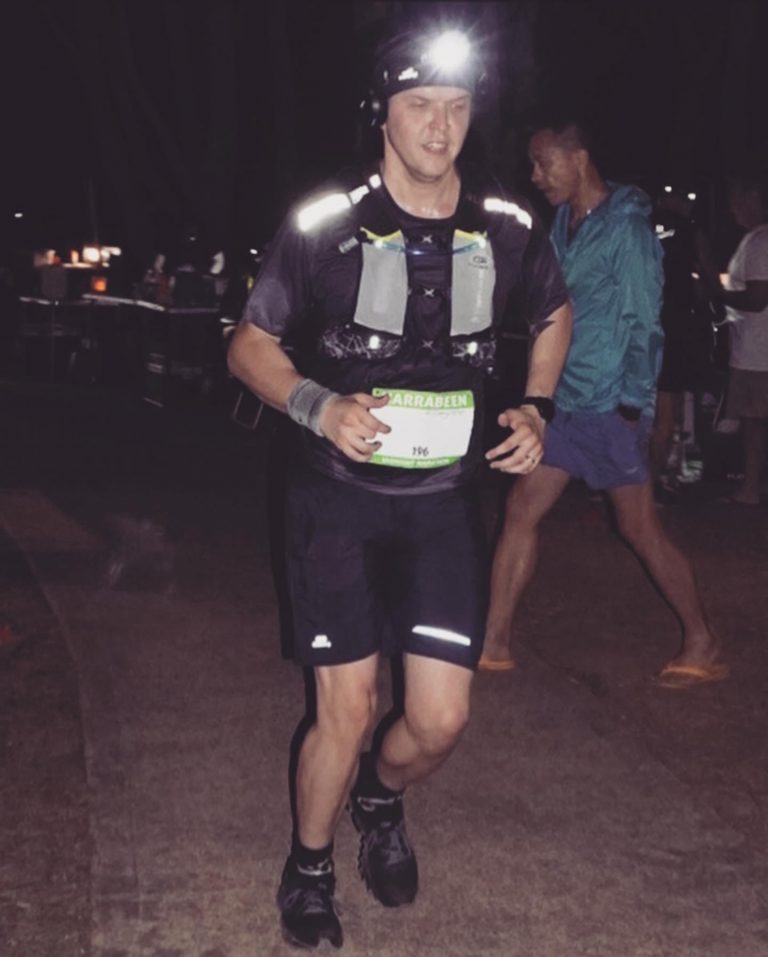I started cycling when I was around 5 or 6 years old, and I really got into it just a few years back. I never forgot cycling as a skill, but I did miss the memo on all the things I needed to consider to stay safe on my bike and ride longer. I had all the gear that was needed, a great bike, great pair of shoes, gloves, helmet— you know the works. Or so I thought.
After consulting with my friends who have cycled longer than me and after tons of research, I discovered how road bike pedals are critical to optimizing my rides. I needed an even transfer of power between both my right and left leg, and I found out bike pedals allow that. I also needed control in order to stop myself from slipping (AGAIN).
Also training for Ironman lately, I wanted to remain injury-free throughout the hours of grueling training required.
But the key is to find the right pedals for you. My old bike had bike pedals installed (the wrong kind of pedal system) and that didn’t stop me from slipping. So I scoured bike shops and the internet to find the best road bike pedals in order to help you avoid what I went through, and stay safer and longer on your rides with a pedal system that works.
Here’s some of the best road bike pedals that I’ve researched when looking for what I wanted. As you will see, there’s a variety of options in the type of pedal system you want with your bike pedals.
Best Road Bike Pedals Compared and Reviewed
| Image | Name | Brand | Check Price |
|---|---|---|---|
Top | Shimano Ultegra R8000 SPD-SL Carbon Road Pedals | Shimano | Check Price on Amazon |
 | Shimano PD-M324 SPD Dual Platform Pedal | Shimano | Check Price on Amazon |
 | Time Xpresso 2 Bike Pedals Sz 9/16in | Time Xpresso | Check Price on Amazon |
 | iSSi - FLIP II SPD Compatible 9/16" Bike Pedals | iSSi | Check Price on Amazon |
 | LOOK Keo 2 Max Carbon Road Pedals | LOOK | Check Price on Amazon |
#1 - Shimano Ultegra R8000 SPD-SL Carbon Road Pedals

Take the Ultegra R8000, which is acclaimed to be a better, lighter, and smaller version (in terms of stack height) than its predecessor the Ultegra R6800. It boasts of stainless steel pedal axle and plates with two bearings on both sides which are housed in a carbon-fiber body.
You can easily adjust the tightness through an Allen key, and it also comes with yellow cleats. This is a great feature when considering the best road bike pedal for your foot.
It performs really well and as it should as it will provide you, the rider, the confidence of feeling safe and secured with its wide platform. When you put the cleat in, you’ll surely be off to ride without ever thinking about your bike pedals or your foot.
And I think this is why Shimano pedals are really popular with cyclists cause it doesn’t give you anything to think about at all but just your ride and how long you’ll stay on your bike.
That’s a plus factor if you ask me. I would recommend this to ‘lazy’ cyclists who don’t like to tinker too much on their bikes and just want the comfort of the ride but still be able to give the performance if needed.
PROS
- Durable
- Carbon fiber body
- Ease of use
CONS
- Quite expensive
#2 - Shimano PD-M324 SPD Dual Platform Pedal
 Another product from Shimano which I think displayed their creativity and innovation in design is the PD-M324 SPD Dual Platform Pedal. I think the number one selling point of this pedal is its adaptable feature which can be enjoyed by a casual commuter and even advanced tourers.
Another product from Shimano which I think displayed their creativity and innovation in design is the PD-M324 SPD Dual Platform Pedal. I think the number one selling point of this pedal is its adaptable feature which can be enjoyed by a casual commuter and even advanced tourers.
SPD dual platform pedal basically means that one side of the pedal has cleats that fit into certain types of cycling shoes, while the other side is for any type of casual kicks.
One side of the pedal is made with a flattened metal cage to house regular sneakers while the other side has cleats that can be adjusted to your convenience in terms of SPD binding. All of these are housed in an aluminum body with metal bolts, cups, and cones that will look as if it will last casual riders a lifetime.
Some find this Shimano pedal a bit heavy, but I personally think it helps with fluidity when riding and I find it quite comfortable. While there are many other dupes of this kind of product at a lower price range, it all boils down to how you plan to use it and how long you want it to last.
PROS
- Dual platform
- Durable
CONS
- A bit on the heavy side
- Quite expensive
#3 - Time Xpresso 2 Bike Pedals Sz 9/16in

Unfortunately, the quality of some of their products have been a bit inconsistent over the years and the Xpresso 2 Bike Pedals is a perfect mix of Time’s good and bad.
For one, I would recommend this product for beginners who do not want to invest too much but are still looking for easy-to-use and lightweight pedals. You will actually feel the click-in of your shoe to signal that you are in the right position which I think is a good thing to have especially for those starting out.
You will find that you can slightly adjust the cleats laterally on this pedal and it can also provide a bit of allowance between the pedal itself and your shoe. This will determine the float that you want– some cyclists like it, some don’t– I personally like it as it gives me a very lightweight feeling.
Now, this is where the bad comes in. Although the pedals are mostly made with durable materials like steel axles and a composite overall body, the Xpresso 2’s has plastic platforms which is a big NO for me. This speaks a lot about how this product will last and that is not very long.
Another thing is it’s pointy and almost sharp edging. I’m not sure if it’s all about aesthetics when they designed this product, but it’s not at all practical. In fact, you can actually get cuts here and there on your lower leg when you walk with your bike that has these pedals on. You have to be extra careful when walking with this around.
What do other cyclists say about this product?
“I love how it performs but I think the razor-sharp corners are a design flaw. I’ve cuts on the side of my legs for those short instances when I take my bike walking in line somewhere or simply pulling it out of the garage. It’s starting to become a real nuisance.” Oliver M.
PROS
- Lightweight
- Lateral cleat adjustment
- Very easy to use
CONS
- Plastic made
- Sharp edges tend to cut lower leg
#4 - iSSi - FLIP II SPD Compatible 9/16" Bike Pedals

While you can enjoy the thickness and heaviness of a good platform pedal on one side (which is preferred by bikers who are starting out), the other side is clipless that comes with convertible spindle if you want to adjust from 58.5 mm to 52/64 mm. On the platform side, you’ll get six semi-depressed metal bolts that give a bit of a grip on usual rides, you may just not opt to use this when it’s raining.
The body is made of generally plastic, which I never appreciate on any pedal as it tells you immediately that it can only last you: a year if you’re lucky. However, they make up for this fact by offering this pedal in a wide range of colors which also tells you that they’re targeting the younger, less invested cyclist who just wants decent pedals but does not want to think of them too much.
PROS
- Easy to install
- Easy to adjust
- Dual platform
- Lightweight
CONS
- Plastic-made
- Not durable
#5 - LOOK Keo 2 Max Carbon Road Pedals

The body is made up of injected carbon housing roller bearings at the cranks and needle bearing at the corners. Rubber contact patches have been placed at the edges and overall, it gives a great look. It seems to be durable like most Look’s products are.
While the performance of these pedals will leave you feeling confident and comfortable, there’s a bit of an issue with cleat insertion. You’ll feel that it clicks on less intuitively and might be a struggle to fit back especially mid-ride. Once you get the hang of the cleats, which is to keep it as close as possible to the right angle, then you’re good to go.
PROS
- Wide surface platforms
- Lightweight
CONS
- Hard-to-insert cleats
My Number One Pick
- ULTEGRA PERFORMANCE - Pro level performance for the enthusiast road rider
- LIGHTWEIGHT - Lightweight; yet durable design weighs only 248 grams
- EXTRA WIDE PLATFORM - Wide platform delivers efficient power transfer and stability
- INTEGRATED CONTACT SURFACE - Durable integrated stainless body plate reduces weight; flex; and wear
- WIDE BEARING STABILITY - Wide bearing placement for stable and uniform load distribution
How Do You Choose The Best Road Bike Pedals For Yourself?
This is a generally wide topic as it should consider a lot of things at the onset. Are you an entry-level rider looking to progress into a tourer or an advanced cyclist? Are you an advanced cyclist looking to upgrade your pedals? Are you merely a daily commuter who battles semi-tough terrain on the daily?
Another thing to consider of course is the Pedal manufacturer, how long have they been around and are they reliable?
These things come into play when you’re looking to buy your next pedal. But assuming you’re a bit of all these, I came up with a guide that can touch upon all the important points but still keeping in mind that all bikers have different riding needs and preferences and that no cyclist is one and the same. Without further ado:
Clipless Pedal systems, Platform, or Clip?
One of the major things that you have to consider when buying a pedal is what kind of pedal you’re comfortable with. In my list of recommended pedals, I’ve mentioned clipless so many times. A clipless pedal system is wherein you buy a special kind of cycling shoes to fit the cleat of a pedal. Technically speaking, the shoe clips on the cleat so it’s not actually clipless (not sure where this came from anymore) but I hope you get the idea.
Here’s an example of A Clipless Pedal System

Clipless road bike pedals are intended for riders who are on the intermediate and advanced range already. Beginners will find clipless road bike pedals very strange and limiting but experienced riders have more control and security on their foot on this.
As an advanced rider, you will also feel more power and you wouldn’t have to worry about your foot sliding as it is actually gripped on the pedal. On the downside, a grip on your foot entails that it will be difficult to jump in case of a bike crash.
With regards to the shoe, the clipless type require a special kind of shoe and the consensus is that these shoes are quite difficult to walk on. This will also entail additional costs for buying cycling shoes.
Platform or flat pedals, on the other hand, have the versatility in that it can be used in any bike and with any shoe. These are the standard pedals you’ll see and are usually made with steel, sometimes nylon, or even plastic.
If you are a social rider, a beginner, a commuter, or just a town rider, flat pedals will be more than sufficient for your needs.
They’re very easy to use and quite durable. It doesn’t entail any hassle of installation and setup, and you wouldn’t need to buy special kinds of shoes for this. Also, this allows more movement on your foot, and you can easily climb and alight your bike any time you want.
The downside is that as you progress to be an intermediate or advanced rider, you will surely feel that platforms provide less control of the pedal which denotes less control of the bike. There is also that tendency of losing footing on your bicycle which will also lead to minor accidents.
Lastly, clip pedals. These are considered to be old-style pedals already but are still worth the mention. This kind is probably the less safe one out of all three as it will put your foot in place at the pedal through a strap— very risky in case of falling from the bike. For this reason, you’ll find clip pedals on commuter bikes or most of the time, stationary bikes at the gym.
Some people still prefer this over the clipless, but it all boils down to your preference.
Clipless road bike pedals are designed for more advanced riders, platforms for casual riders and beginners, and clip pedals for the younger or old-school riders. Luckily, you’ll find dual purpose pedals like the Shimano PDM324 and the iSSi Flip II.
Stack
The stack refers to the thickness of the pedals in terms of height. It is basically how far your foot is from the spindle of the pedal. The general rule is the lower the stack height, the better.
This is because if the bottom of your foot is closer to the axle of the pedal, swindling motion is more, therefore, power from your leg to your foot is transferred efficiently. From the list, the Keo Max 2 has one of the lowest stack heights.
Float
The float is the result of the rotational movement provided by the natural twist of clipless pedals. This was first developed to address the problems faced by riders who used fixed clipless pedals which resulted in knee pains. Time is one of the pioneer brands for this design.

This consideration is for advanced riders who are looking for movement in their clipless road bike pedals be it as free float, with friction or spring-centered. All of the pedals mentioned provide float to some degree which varies to the kind of pedal and adjustments applied.
Frequently Asked Questions About Road Bike Pedals
Q: How do I manage a fall with a clipless pedal?
A: It is normal to feel like you’re always about to fall when you’re using clipless pedals. However, actually falling on a bike with clipless pedals is a different scenario. You’ll never anticipate an accident that’s about to happen, so the best thing you can do is to be prepared for it.
Preparation would entail that you place your bike in a stationary stand and practice clipping on, off, and on back again. Do this as many times as you want daily until your muscle remembers that you need to twist your foot a bit to disengage. Do this until the movement is natural that you don’t even have to consciously think about it anymore. Only then will your instincts kick in when you find yourself mid-fall.
Q: Are cleats universal?
A: Most cycling shoes will fit the most common cleats, so you have no problem choosing a shoe. Specialized cleats, on the other hand, would require a special kind of shoe. If you’re planning to upgrade clipless pedals, it’s best to check on the cleat first, then proceed to purchase your shoe.
Conclusion
There are a handful of things to consider as you progress through your cycling journey and every level will have a different requirement which is all based on how you feel as the rider. There is no single perfect set up and correct pedal to use. It’s all a matter of preference.
Some like it clipless, others its platform— you do you. I hope I’ve given some value to your cycling life and let me know what you think about all these in the comments section. I would love to hear your feedback.
Also, if you’re cycling in the rain why not check the cycling rain jackets that I’ve reviewed previously as well? The most important thing as a cyclist is to have the right gear and remain safe in all conditions. Check out my reviews on the best cycling socks to compliment your new pedals as well.
Sources:
https://www.rei.com/learn/expert-advice/bike-pedals.html
https://www.active.com/cycling/articles/types-of-bike-pedals-a-user-s-guide-for-all-levels

Marko Rakic is a trail runner and fitness enthusiast from Sydney, Australia. He is the lead writer for The Ultimate Primate and believes the best way to live a happy life is through constantly challenging yourself.

